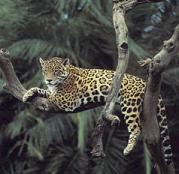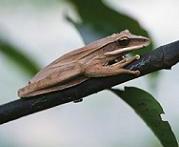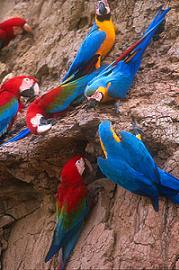| home | geography | wildlife | travel | |
The Amazon Rainforest has the greatest biological diversity of anywhere in the world. |
||||
Animal life Of particular interest is the endangered Jaguar (pictured top right) - the most powerful of the American cat family. 'Jaguar' means he who kills with one leap - a good name for the lean, stealthy hunter which is at the top of the Amazonian food chain. Jaguars range from 3 to 6 feet in length and 70 to 350 pounds in weight. Amazonia is home to one of the world's largest snakes - the Anaconda. It weighs more than a cow and uses this bulk to good effect, crushing its prey by constriction before swallowing it head first. A more docile native animal is the Tapir. This herbivore has an elongated proboscis (nose) which it uses to sweep plants into its mouth. Just a few of the many hundred animal species in the area include giant otters, pink Boto dolphins, turtles, squirrel and howler monkeys, marmosets, anteaters, armadillos, deer and many bird species including the colourful macaw (pictured right). The rivers are packed full of fish including rainbow bass, surubim and the infamous piranha. Sport fishing is becoming more popular. Plant life Much of the plant life grows at what is called the canopy layer. The trees here are smooth oval leaves that grow so dense they prevent 80 percent of the sunlight from reaching the ground. Many fruits and flowers grow in this layer which also provides food and habitats for many of the jungle's creatures. Trees can reach 200ft in height supported by trunks up to 16 feet round braced by massive buttress style roots. |
   |
|||
| home | geography | wildlife | travel | ||||